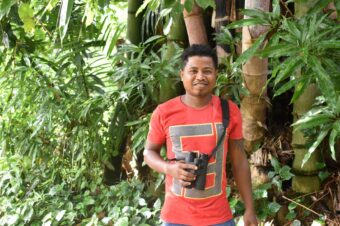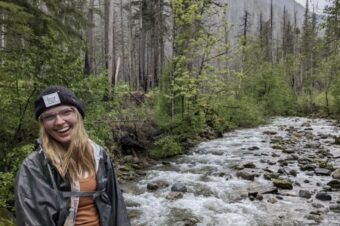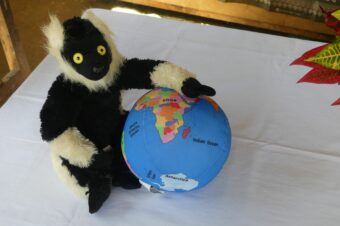
Omaha’s Henry Doorly Zoo and Aquarium and Madagascar Biodiversity Partnership are partnering with Daharicomores.org to begin a research program on the mongoose lemurs in the forest areas of Madagascar and the Comoros Islands.
We took the liberty of using google translator to give you the project information from their website! The MBP is excited to be a part of this research project.
“The lemur Mung (Eulemur mongoz), lives in the forest areas of Madagascar and the Comoros, in small family groups consisting of a monogamous pair and juveniles who leave their parents at the age of 3 to 5 years. In this case, the length of the head and body is 30 to 40 centimeters and that the tail is from 40 to 65 centimeters. The weight varies from 1.1 to 1.6 kg. This epèce has the distinction of being day or night depending on the dry or wet season.
The lemur Mung was classified as a vulnerable species in 2000. But due to the continuing decline of the species related to the decrease in the extent and quality of habitat and poaching, the species was classified as critically endangered on red List IUCN in 2014. In addition, E. mongoz experienced hybridization with E. rufus west of the region Betsiboka Madagascar.
The lemur research project started in November 2014. The aim of the project is to identify genetic links between populations Eulemur mongoz from Anjouan and Madagascar by analyzing the genetic material from the sample feces and blood.
Habitat loss is dramatic in the southern region of the Betsiboka River in Madagascar. The study compared the genomes of mung lemurs of Madagascar and Anjouan will indicate whether the two populations have a high genetic diversity for the maintenance of the species. The population of Eulemur mongoz Anjouan could serve as a genetic reservoir for the region of Betsiboka and avoid the extinction of the species. In parallel, the field work in Anjouan will generate information on the population of mung lemurs of this island.
The research is organized around a two-step methodology:
- La Sample collection and DNA extraction
Faeces samples and blood have been collected in Madagascar 10 Anjahamena, Antema 7, 9 to Tsiombikibo, and 1 to Ankarafantsika. In Anjouan, 20 fecal samples will be collected. DNA will be extracted genetic laboratory Omaha’s Henry Doorly Zoo and Aquarium. - La generation and analysis of data
The data generation work will take place in the genetic laboratory of Omaha’s Henry Doorly Zoo and Aquarium. The DNA will be compared to the genomes of other primates: humans, chimpanzees, orangutans and rhesus macaques. The genetic material of lemur mung MyBaits will be analyzed by the software. Genomes and nuclear DNA sequence data will be evaluated to determine the relatedness of the species and the other members of the genus Eulemur.” See More
Un projet de recherche sur les lémuriens a débuté en novembre 2014. L’objectif du projet est d’identifier les liens génétiques entre les populations des lémuriens Eulemur mongoz vivant à Anjouan et à Madagascar en analysant le matériel génétique l’issu d’échantillons de matières fécales et de sang.
Pour plus de détails, cliquez sur ce lien: http://daharicomores.org/nos-actions/conservation/










Leave a Reply